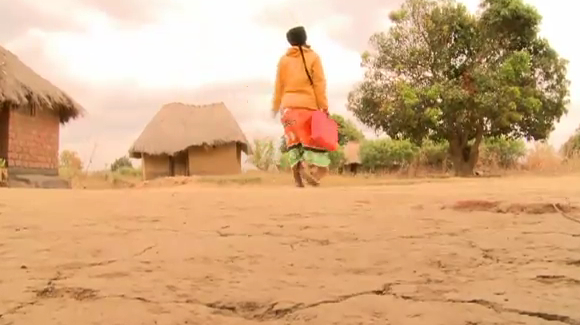Attachment, Trauma, and Healing originally was published in 1998. Since then, there have been advances in the fields of child and family psychology, psychotherapy and the evolution of our work with traumatized children, adults and family systems. The second edition of this book will include an additional focus on interpersonal neurobiology, adult and couple treatment, positive psychology and the evolution of Corrective Attachment Therapy and Corrective Attachment Parenting.
Interpersonal Neurobiology
The study of interpersonal neurobiology focuses on the relationship between early attachment experiences and the “wiring” of the brain (Schore 2012; Siegel 2007). Understanding neurobiology has resulted in a deeper appreciation of how the earliest relationships shape child development and influence later in life. Brain development in infancy is “experience-dependent;” the baby’s brain, specifically the limbic system, relies on sensitive and attuned care from attachment figures for healthy growth and functioning. Early relationship experiences play an essential role in shaping the architecture of the brain and building connections between parts of the brain. Chronic stress associated with lack of safe and secure attachment can impair the formation of brain circuits and alter levels of stress hormones, resulting in emotional and biological dysregulation, anxiety, and depression.
Combining our understanding of attachment, trauma, child development, family systems, and neurobiology enables us to provide a comprehensive approach to treatment and parent training that links mind, body, and relationships. Psychotherapy with children and adults who have experienced interpersonal trauma focuses on changing brain structure and function—rewiring the limbic brain—in addition to mental, emotional, and social changes.
Adult Attachment
Over the past decade there has been significant interest in adult attachment styles and how these patterns of attachment influence adult intimate and romantic relationships (Johnson 2008; Levine & Heller 2010). Attachment styles learned in childhood tend to endure throughout life. Thus, each of the four childhood attachment styles has a corresponding adult version. Securely attached children become autonomous adults, who are comfortable in warm, loving, and emotionally close relationships. Avoidantly attached children become dismissive adults, who are distant and rejecting in their intimate relationships. Anxiously attached children develop into preoccupied adults, chronically insecure, needy, and worried about abandonment. Children with disorganized attachment, a result of severe maltreatment, turn into unsresolved adults, who display PTSD symptoms, cannot tolerate emotional closeness, and have serious psychosocial problems.
The quality of adult attachment relationships affects emotional and physical health. Just as a secure attachment in childhood is associated with overall well-being, attachment security in adulthood is a primary factor linked to a healthy and meaningful life. In addition to a treatment program for children, parents, and families, we provide therapy for adults and couples who have a history of maltreatment, unresolved loss, and interpersonal trauma.
Positive Psychology
Until recently, the field of mental health focused primarily on psychopathology and mental illness. Positive psychology, conversely, is the study of positive emotions, psychological strengths, and paths to a meaningful and fulfilling life. Additionally, lessons learned from research on positive psychology have shed light on resilience, recovery, and posttraumatic growth following trauma. The study of posttraumatic growth (PTG) shows that many people increase personal strength, appreciation of life, positive relationships, and spirituality, following traumatic experiences. The factors associated with resilience and PTG are hope, positive emotions, social support, sense of meaning and purpose, acts of kindness, and internal locus of control (belief in one’s ability to change).
While our treatment and parenting programs concentrate on alleviating the psychological, social, behavioral, and biological effects of interpersonal trauma, there is an equal emphasis on capitalizing on strengths and resources and fostering resilience—from “victim to survivor.” Individual and family therapy must facilitate a future-oriented approach, in which the goal is to help children and adults create meaningful and fulfilling lives.
Evolution of Our Therapy
Since the publication of Attachment, Therapy, and Healing in 1998, we have worked with thousands of children, adults, couples, and families in our treatment programs, as well as thousands of mental health, social service, school system, and allied professionals in training programs. We constantly strive to make treatment and training programs more effective and compatible with the latest research findings and advances in the field.
Years ago we combined our knowledge of trauma and compromised attachment with a family systems approach. Therapy in the 1970s and 1980s was more child-focused, rather than identifying and modifying the psychosocial context of the child—the family dynamics and structure. Next, we emphasized adult attachment patterns, from the perspective of adult intimate, romantic relationships (e.g., marriage), and parent’s attachment histories. We incorporated the Life Script, an assessment tool to identify and understand prior relationship experiences that affect current perceptions and patterns of behavior. For example, helping parents to identify their emotional “triggers” enabled them to utilize parenting skills and solutions more effectively.
Attachment Communication Training (ACT) became an essential aspect of our treatment and parenting program. Teaching children, parents, and adult couples the skills of constructive communication, problem-solving, and conflict management facilitates positive change in destructive and dysfunctional relationships. As previously noted, the recent research on the brain and human relationships—interpersonal neurobiology—has helped us understand the biological basis of developmental trauma and disrupted attachment. Therapeutically, understanding neurobiology has enabled us to design experiential interventions which bring about rewiring of the limbic brain and mitigate the biochemistry of stress and trauma.
The original model of attachment and trauma therapy was coercive and intrusive (“rage-reduction”). Our model focuses less on the child’s anger and more on the deeper emotions; i.e, fear, sadness, loss, grief, shame. The goal of our therapy is to create connections between parents and children, not to control their behavior. It is a supportive, nurturing, and compassionate approach. In 1989, we cofounded the Association for the Treatment and Training in the Attachment of Children (ATTACh). This is an international organization concentrating on research, therapy, and education regarding attachment and trauma. ATTACh advocates for evidence-based and ethical approaches to helping children and families.


